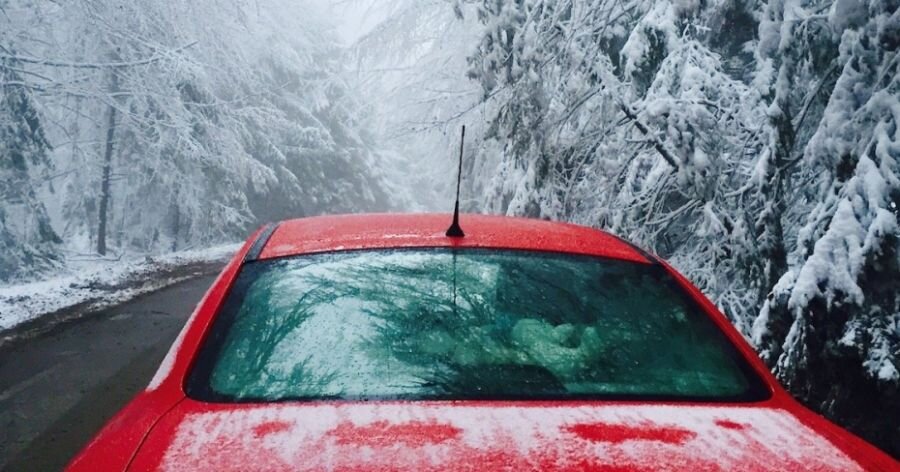We answer our reader’s questions about car insurance: January edition
By: John Shmuel on January 18, 2018
Like they say: new year, new … life-threatening cold front?
It’s been a miserable winter for Canadian drivers. The Canadian Automobile Association has seen calls for distressed drivers up 50% this year as engines have stalled, tires have popped and accidents have spiked.
Let’s start this month’s post with some advice: if you’re driving out there, make sure your car is properly winterized. Our very own Jessica Mach has a good roundup of what you need to do to make sure you’re ready to drive in the cold.
Alright, now that that’s out of the way. Here’s a look at what some of our readers had to ask this month about auto insurance.
What is with all the different types of car insurance? What is PLPD, one-way insurance, full coverage, road coverage, fire and theft coverage, liability coverage? How do I know what all these terms mean and what they cover
Ah, insurance companies. We love your overly complicated naming conventions for your products. “Personal liability and property damage insurance” rolls right off the tongue.
PLPD: covers costs in the event you cause damage to someone else's vehicle or personal property in an accident. It also covers injuries you caused to another person. Damage to your vehicle, however, will not be covered if you're at fault as this coverage is for damage you inflict. This is also known as one-way auto insurance.
Emergency road coverage: offers you coverage if you need a tow or road repair because something happened as you were driving — your tire blew out, the "check engine" light flashed on, your car just died, etc.
Third party fire and theft coverage: this is coverage for damage that can happen to your car even if it's not being driven. So things like fire, if it’s stolen, storm damage, or vandalism. The insurer will cover the repair or replacement of the vehicle in these circumstances.
Full coverage: This is a combination of coverages that your insurer or broker will often describe as “fully” covering all the bases. It’s usually a combination of the above. Getting full coverage will depend on how and how often you operate your vehicle.
Being properly covered is important. Don’t scale down your coverage just because it can save you a couple hundred of dollars a year.
I was listed on a fleet policy (because I worked at a car dealership) and never had my own car because I drove the cars on the lot. I just bought a car for myself and am wondering if can I use my experience from the fleet policy or does that not count towards a personal auto insurance policy?
We checked in with our brokers about this one. You can potentially use the years you drove under a fleet policy, but you have to produce a document from the insurer and your employer that you were listed as a named driver on the vehicle. Typically, however, fleet policies will simply include a list of people who can drive vehicles. This won't count toward your total years experience when applying for a new policy.
Because insurance companies will have trouble actually proving you ever drove the vehicles for the determined amount of time, getting this experience in your history is difficult.
What are the mandatory coverages I legally have to have on my vehicle? If I add physical damage coverage to my car, what is the difference between choosing a higher deductible versus a lower one? What is the impact to my premium? When is it no longer worthwhile to have physical damage coverage on my car?
Mandatory coverages differ from province-to-province. All provinces mandate you must have at least third-party liability coverage, with a minimum coverage amount in the event you're in an accident. Here's a breakdown of the minimums:
Alberta: $200,000
British Columbia: $200,000
Manitoba: $200,000
New Brunswick: $200,000
Newfoundland & Labrador: $200,000
Nova Scotia: $500,000
Ontario: $200,00
Prince Edward Island: $200,000
Quebec: $50,000
Saskatchewan: $200,000
As you can see, Quebec and Nova Scotia are the two outliers. While these are mandatory minimums, brokers we spoke to recommend going higher where you can when you can afford it. $1 million liability is a good bet. This allows you to be protected in the event you seriously hurt or injure someone, and they decide to sue you in court for loss.
The good news is that if you cross into a province with a higher minimum, and you have the proper coverage in your own province, your insurance company will honour the higher amount if you get into an accident.
Choosing a higher deductible will lower your auto insurance, because it means you’ll be paying more out of your own pocket if you get into an accident. But if you go from a $500 to a $1,000 deductible, make sure you actually have that money on hand if you get into an accident.
Finally, if your car is really old and you’re willing to write it off as a total loss in the event of an accident, well, then you can skip physical damage insurance.
Compare rates from more than 20 auto insurance companies in Canada using the LowestRates.ca quoter. It takes three minutes and it's free.
Get started

.jpg?itok=88nBkwga)
.jpg?itok=W5fSKczJ)